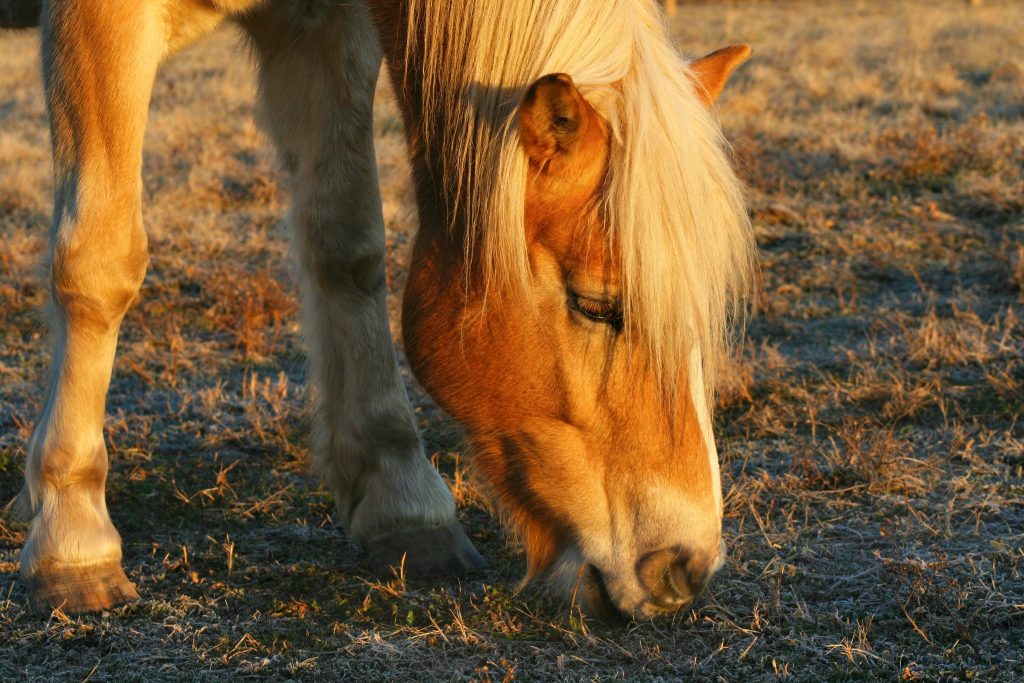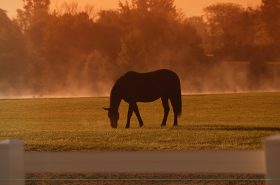Hooray, it’s officially fall! Crisp mornings, changing leaves, comfortable riding weather—we have much to look forward to in the months ahead.
However, when it comes to your pasture, there are a few things to be aware of during this time of year, especially if your horse has metabolic challenges or is at risk for developing laminitis.
Here are eight facts you may or may not know about fall pasture:
#1 As grasses mature, their level of poorly fermentable fiber rises, which may decrease the level of digestible nutrients, as well as lower the caloric value of the grass overall.
#2 Mature or dormant grass also has substantially lower protein content when compared to lush, growing spring grasses.
#3 Mild temperatures along with fall rains may cause a spike in grass growth. This, combined with cool nighttime temperatures (below 40 degrees F) increases sugar levels in mature grass and poses a laminitis risk for some horses.
#4 Grass covered in frost is likely too dangerous for insulin resistant horses to graze on. The first frost is the most dangerous, but subsequent frosts may be less dangerous.

#5 Overgrazed or low-quality pastures may lead horses to eat plants they wouldn’t normally touch, including poisonous ones. To make matters worse, some plants are at their most toxic in fall, including horse nettle, white snakeroot, and toxic fungus which can affect perennial ryegrass. Acorns eaten in large quantities can also pose a problem.
#6 Cool season grasses such as timothy, brome, orchard grass, Kentucky bluegrass, and fescue usually continue to grow during cooler months while warm season grasses such as coastal Bermuda, buffalo grass, and Teff usually go dormant in fall.
#7 Once all grass has gone completely dormant, it is generally safe for metabolic horses to graze. Of course, you will also need to feed hay at this time as brown grass provides little to nothing in the way of nutrition.
#8 Declining pasture quality in fall can be a serious issue for young growing horses, pregnant mares, and senior horses. Therefore, supplementing quality hay and concentrates is of particular importance for them.
Keep this information in mind, and help your horse stay healthy this fall!
**
Casie Bazay is a freelance and young adult writer, as well as an owner/barefoot trimmer and certified equine acupressure practitioner. She hosts the blog, The Naturally Healthy Horse, where she regularly shares information on barefoot, equine nutrition, and holistic horse health. Once an avid barrel racer, Casie now enjoys just giving back to the horses who have given her so much. Follow Casie at www.casiebazay.com.



